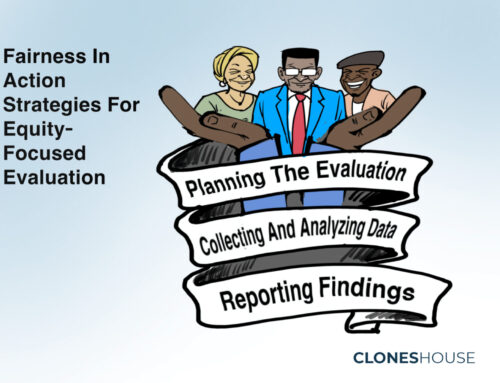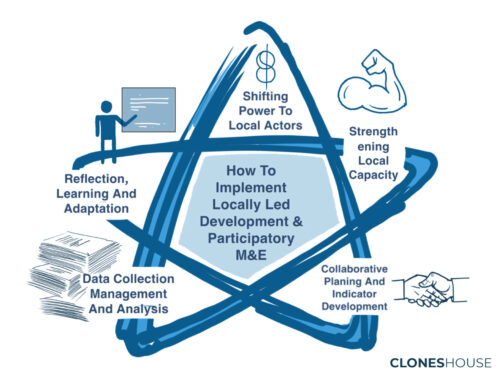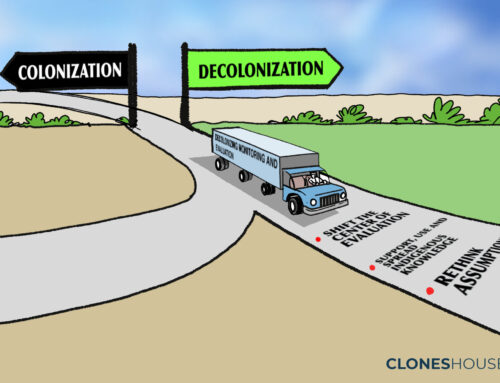“Who has seen the wind? Neither you nor I. But when the trees bow their heads, we know the wind is passing by”.
Those were words from the poet, Christina Georgina Rosetti. Do you remember the wind vane? Was it part of your small project in your secondary school? Do you remember where it was placed in your secondary school? It used to be a tool people use to identify the direction of the wind, just before smartphones came into town. Indicators show you the direction of your project activities to achieving results i.e it is a measure of your rallies, town hall meetings, sensitization, and campaigns contribution to the objectives you have identified for your project – so something like your windvane.
Indicators are what you actually collect information on to see if the impact you have been aiming for has occurred. It is very difficult to know if your program actually “caused” the change you see. But we use indicators to infer that the intervention (project or program) was a part of what caused the change we measure with the indicator. As a program initiator, and during proposal development, you will develop at least one indicator for each of your objectives by selecting, adapting or creating your own. The more specific, descriptive, and tied to your program your objectives are, the easier it will be to develop and come to some agreement with your team about what an appropriate indicator is.
Programs that incorporate a rights-based social justice perspective address aspects of complex social concepts, such as gender equity and reproductive rights. These concepts can be difficult to “see” and measure. Therefore, you need to think about what the components of these complex concepts are, and what they look like in your program’s setting. For indicators to do their job of telling you how well your program works, they need to be valid (it measures what it is supposed to), reliable (the meaning is stable across people, place and time), and feasible (collecting the data for the indicator will be possible and affordable). You will need at least one indicator for each of your objectives.
An initial step to creating a locally relevant indicator is to use Pre-existing indicators when Possible. Regardless of whether or not you have already developed some indicators you can benefit from looking at the indicators that others have developed. There is no need to reinvent the wheel as it is often preferable not to do so. Indicators that have been developed by others will often have been tested for reliability and validity. Ask colleagues at civil society organizations similar to yours, and at international non – governmental organizations (INGOs), if they have already developed locally meaningful indicators. However, you need to be sure that they are relevant to your program’s context or they will not provide a fair measure of your program’s impact. You will probably need to adapt the indicators you have found to make sure they work with your target population and in your program’s context. So where do you get pre-existing indicators:
A Czech INGO – “People in Need”, has a repository of indicators of development and humanitarian relief work. You can find it at https://www.indikit.net/
For CSOs that are involved in voice and accountability projects, this working paper on Measuring Change and Results in Voice and Accountability Work might be useful in gathering indicators. It can be accessed at https://www.oecd.org/derec/unitedkingdom/44463612.pdf
A compendium of health and gender empowerment indicators have been provided by the Data for Impact Team of USAID at https://www.data4impactproject.org/prh/summary-list-of-indicators/
The 18 sustainable development goals have 231 unique indicators. Please note that the total number of indicators listed in the global indicator framework of SDG indicators is 247. However, twelve indicators repeat under two or three different targets. The indicators can be found here https://unstats.un.org/sdgs/indicators/indicators-list/
Consider adapting the indicators you have found at your initial stage. For example, women empowerment is a key aspect of Elsalam Abdulkareem Foundation. One aspect of women’s empowerment is decision making at home. Here is a breakdown of how you might adapt and make more specific the indicator “decision making in the home”.
| Elsalam Abdulkareem Foundation program objective focuses on improvement in Women’s Empowerment | The content of the Foundation’s indicators might include |
|---|---|
| Decision – making in the home |
|
A third step is to discuss the adapted indicators with your team members, partners, beneficiaries, and researchers in the field. Women’s empowerment is an aspect of Elsalam Abdulkareem Foundation objectives, Hassan Kareem, the program Manager, and his team has decided that women’s perceptions of their role in household decision making is an indicator of empowerment, then his team needs to further decide what success would be with regards to household decision making in the context of participants’ lives. If they had reached their objective would that be indicated by a particular type of decision- like the ability to decide when to go to the doctor? Is that a realistic expectation in their program setting? Or is that a change that could only occur after a much more intense program experience or length of time?
| For use during Developing Theory of Change | For use in deciding on your indicators |
|---|---|
| Result Level (e.g outcome ) | What would success and failure (high and low/good and bad levels) on each component look like in your local setting? |
| Which component do you think your program can impact? (e.g youth participation) | On which of these is there a good agreement among the people you consulted |
| Which are relevant- and possible to target- to your local context and to your program? (e.g. youth rallies not youth debate) |
Lastly, think about how your indicators address the purpose of your monitoring and evaluation. You will need to think about the kind of information or data you will need to collect for each indicator. Some measures (or indicators) are expressed as numbers (numerical) and others as words (non-numerical). Both numerical and non-numerical indicators have their roles and purposes in project monitoring and evaluation. Making the choice between numerical and non-numerical indicators is shaped by your monitoring and evaluation questions, and audiences.
Are you thinking about how you have gotten to develop indicators in the past? Is it any different? Or similar? You might also be wondering if people ever follow these steps? Last year alone, I facilitated several workshops with a total of 130 CSOs and other civil society networks, only few mentioned they followed these steps. Practically, some of us do not have the time to go through all the stages – and most times, we end up at the first stage – which is using existing indicators. That is not sufficient because the context is different, so next time you should consider – adapting the existing indicators, discussing it with your colleagues and stakeholders, and put some thoughts around how it affects the type of data to collect. Reason, why you will see different types of wind vanes – they perform the same function of showing us where the wind is headed.




